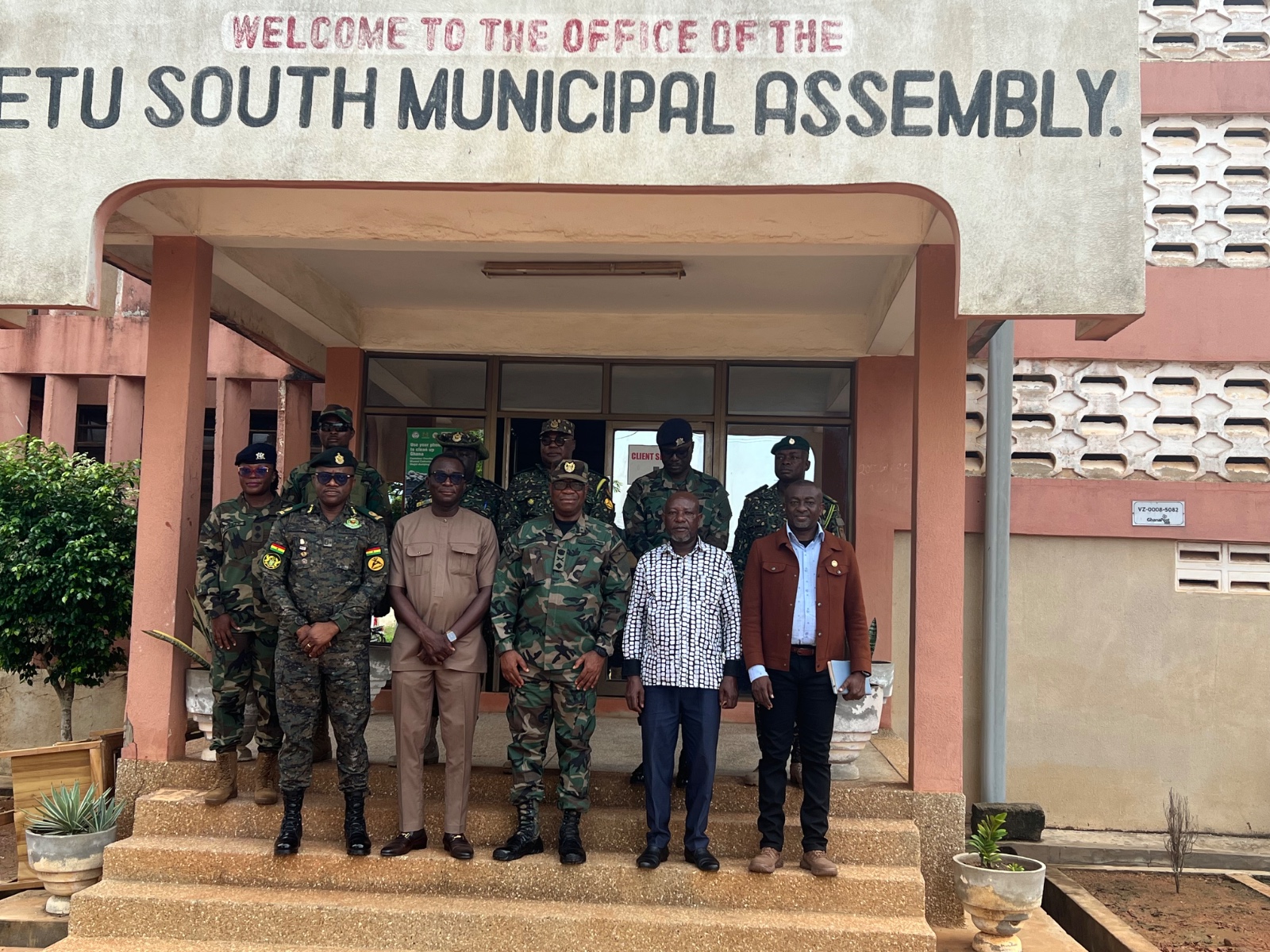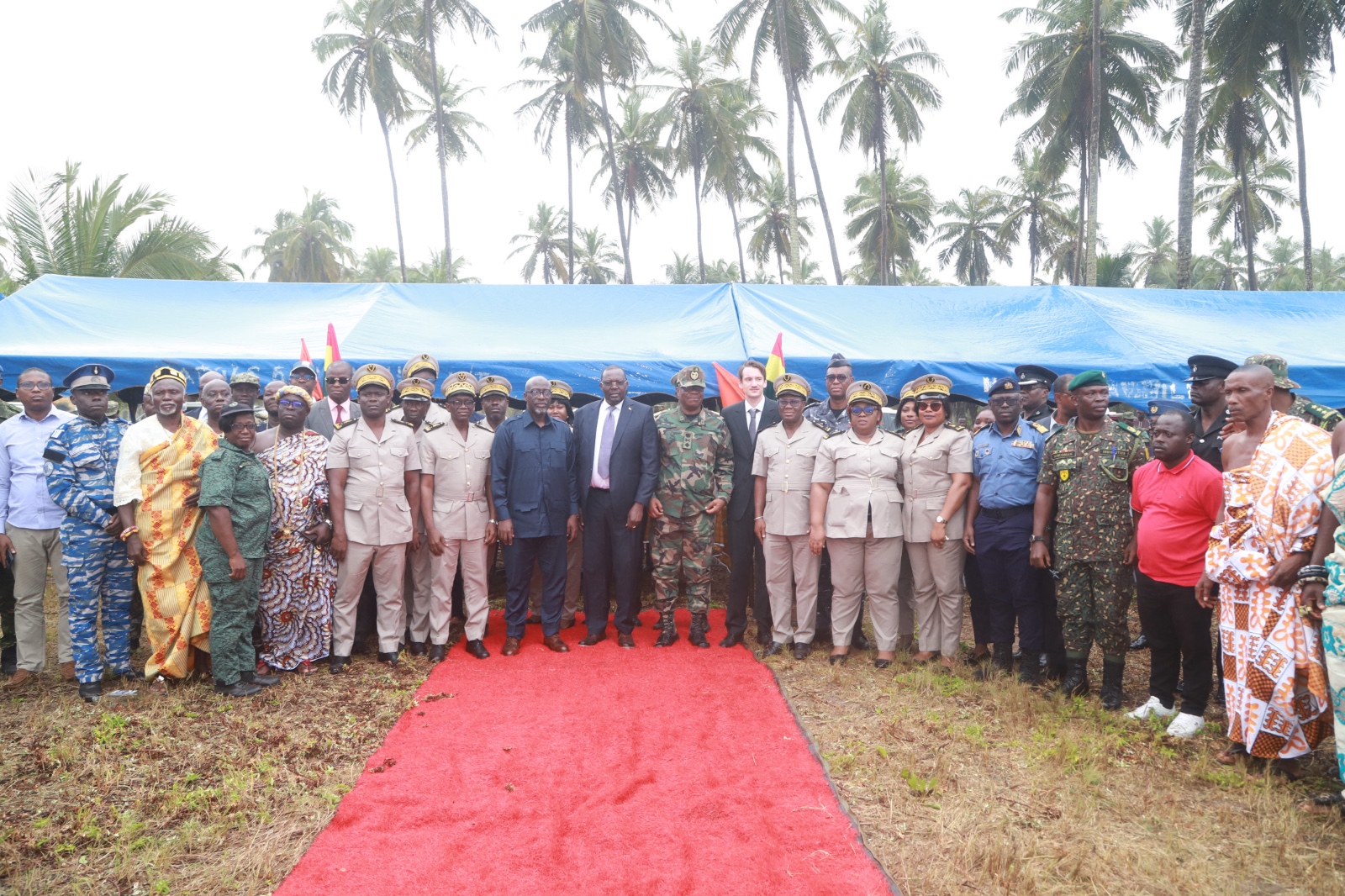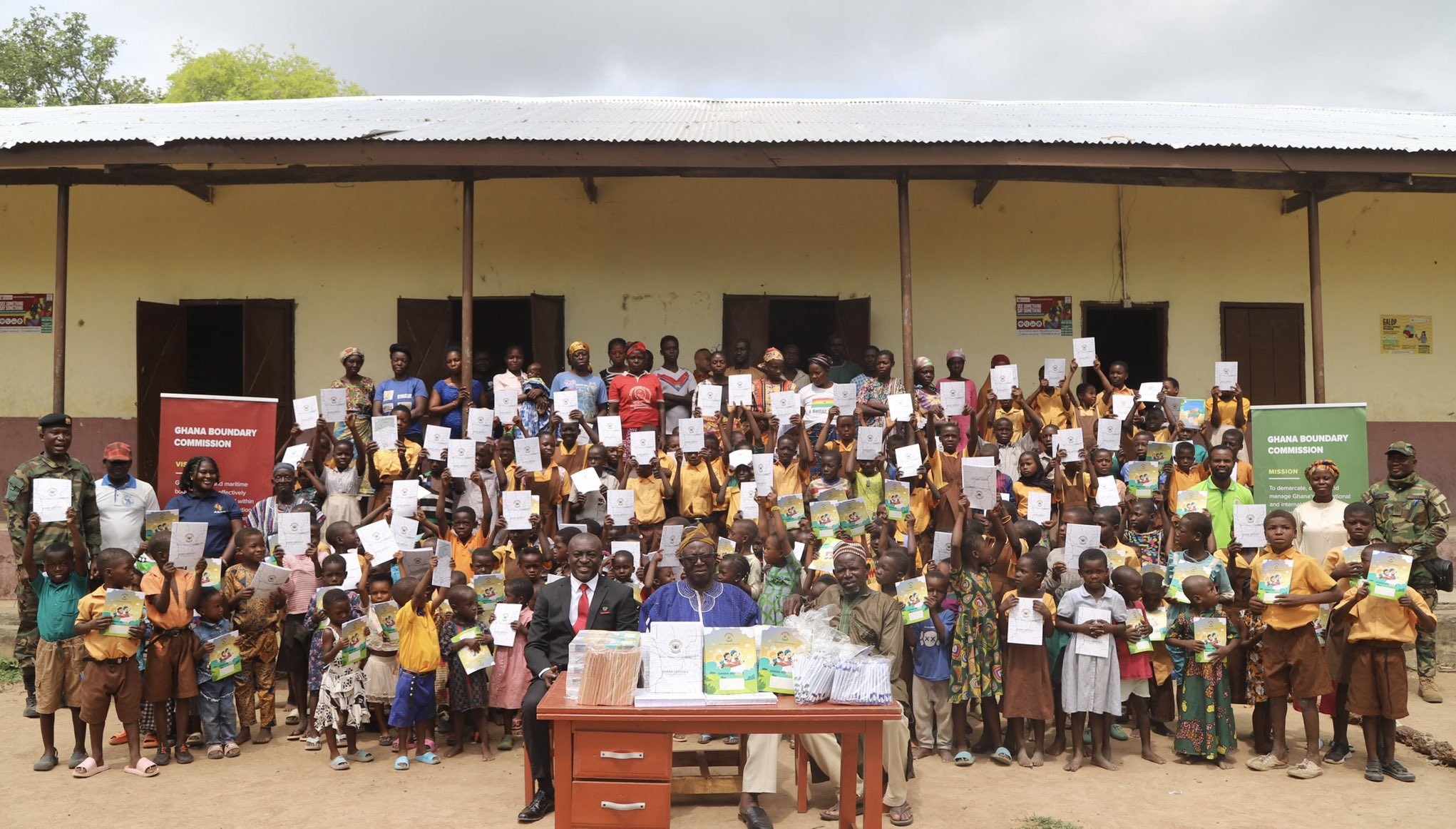
Commissioner General of the Ghana Boundary Commission Embarks on three-day working visit to Ketu North and South in the Volta Region
The Commissioner General of the Ghana Boundary Commission, Brigadier General Anthony Ntem, has embarked on a three-day working visit to the Ketu North and Ketu South Municipalities in the Volta Region. The visit forms part of the Commission’s ongoing efforts to strengthen stakeholder collaboration in the governance of Ghana’s international land boundaries.
During the visit, the Commissioner General and his team engaged key political, traditional, and border security stakeholders to advance dialogue on the protection, preservation, and visibility of boundary markers. The initiative also aimed to enhance inter-agency coordination and initiate broader leadership and community-level sensitisation on the importance of Ghana’s international boundaries in addressing cross-border security, mobility, and development concerns.
A significant highlight of the visit was the field assessment of Boundary Pillars 1 and 2. Boundary Pillar 1 marks the starting point of Ghana’s international land boundary with Togo and serves as the baseline for Ghana’s international maritime boundary delimitation with its Eastern neighbour. The team assessed the visibility, geospatial position, and physical condition of the boundary markers, as well as identified environmental and human-induced threats compromising their integrity.
As part of the visit, the delegation paid a courtesy call on the Volta Regional Minister, Hon. James Gunu, at the Volta Regional Coordinating Council in Ho. The Minister congratulated Brigadier General Ntem on his appointment and pledged support for the Commission’s initiatives. He emphasised the importance of aligning regional development plans with contemporary border governance frameworks and indicated the need for strengthened inter-district collaboration to address shared cross-border challenges.
The Commissioner General also called on the Paramount Chief of the Aflao Traditional Area, Togbui Adzonugaga Amenya Fiti V. Discussions focused on the traditional perspectives of boundary management, the historical demarcation of the Ghana/Togo international land boundary, and the role of traditional authorities in promoting peace and cooperation along the international boundary. Togbui Adzonugaga Amenya Fiti raised concerns about logistical constraints faced by border security personnel and appealed for the Commission’s support in addressing those issues. Brigadier General Ntem assured the Paramount Chief of closer collaboration between the Commission and the traditional leadership of Aflao.
Further engagements included a working meeting with the Municipal Chief Executive of Ketu South, Hon. Nicholas Oklashie. Discussions focused on urban encroachment near the international boundary, the state of boundary infrastructure in the municipality, and the need for sustained public awareness in border communities. Hon. Oklashie underscored the shared socio-cultural ties between Ghana and Togo and expressed confidence in the leadership of Brigadier General Ntem, assuring the Commission of his full cooperation.
Ahead of the boundary inspections, the Commissioner General also visited the Aflao Border Post, where he held discussions with the Ghana Immigration Service Sector Commander, Assistant Commissioner Mark Asamoah Boakye. The interaction addressed operational challenges and explored avenues for enhanced surveillance and inter-agency cooperation in the area.
The inspection of Boundary Pillars 1 and 2 revealed critical threats such as environmental degradation, human settlement encroachment, and unregulated infrastructure development. Speaking to the media, Brigadier General Ntem emphasised the Commission’s commitment to safeguarding the integrity of Ghana’s international boundaries and announced plans for a broader assessment exercise in the Ketu South area in the coming weeks.
Brigadier General Anthony Ntem was appointed Commissioner General of the Ghana Boundary Commission in May 2025 and has since prioritised proactive stakeholder engagement, inter-agency collaboration, and the physical reaffirmation of Ghana’s international land boundaries, as well as the delimitation of Ghana’s international maritime boundaries.



